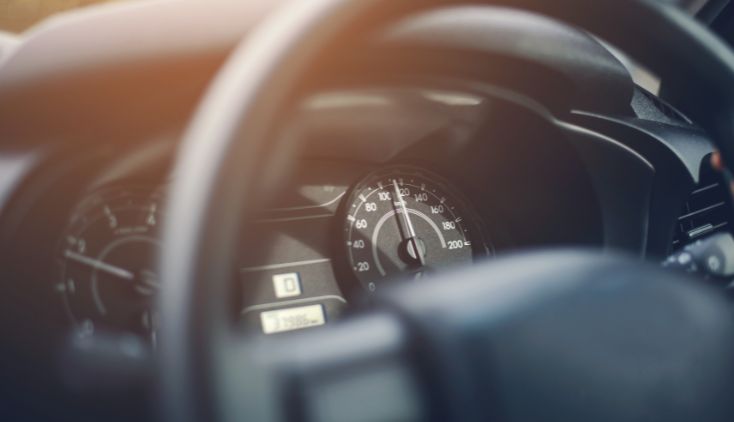Navigating the Fuel Efficiency Maze
It doesn't matter if the price of gas is spiking or stable; each time you slide the plastic into the pump and watch the numbers roll up, you wonder what you can do to squeeze a few more miles out of a tank of gas. The desire to increase fuel efficiency has driven automotive design and technology among manufacturers for decades. While car makers have made significant advances in improving MPG, the driving public has a seemingly unquenchable desire for tips to cut fuel costs.
And that's where we come in.
What follows is a list of no-cost, low-cost actions drivers can take to lower gas expenses. These tips are universal and apply to all vehicles regardless if you drive a big, honking 5677 lbs. F 250 Heavy Duty rated at 12 mpg or a subcompact like the 2767 lbs, Kia Rio that gets 36 combined mpg. We will also list popular urban legends and scams that will do nothing to improve mileage and may increase fuel expenses.
Science Says These Tips Increase Gas Mileage
Let the car makers worry about the design, materials, engine dynamics, exhaust systems and all the rest. They have the resources and talent to optimize fuel economy. Let them do their jobs, and don't mess with OEM designs or systems if you want optimal MPG.
Instead, rely on simple physics; specifically, Force equals Mass times Acceleration (F=ma). The more you can reduce the size or weight of the mass or slow the acceleration, the less force (energy) is required.
- Properly inflate underinflated tires. Underinflated tires increase the tire's footprint. More tires touching the pavement means there is more resistance to acceleration, which in turn requires more force (energy) to move the mass (tire). Inflating the tire to the manufacturer-recommended pressure will optimize the footprint and provide optimal mileage and tire wear.
- Overinflate tires. Overinflated tires will provide greater gas mileage for the same reasons as properly inflated tires. Overinflated tires shrink the tread's footprint creating a curved contact with the pavement rather than a flat profile. However, overinflated tires will result in uneven tire wear and shorten the service life of the rubber. Trust us, the cost of early replacement of a set of tires will far outweigh any fuel savings you might experience.
- Dump the Junk in Your Trunk. If you consider your trunk a mobile storage locker, you are most likely causing your engine to work harder than it needs. Packing the extra weight in the back in the back increases the weight of the mass, requiring greater force to move it. Toss the junk and find a new home for your stuff to improve fuel efficiency.
- Drafting Behind a Larger Vehicle Increases Fuel Efficiency. We have all seen NASCAR racers lined up bumper-to-bumper "drafting" off the car in front of them. The lead car breaks the path of the air creating a low-pressure area directly behind it. The low pressure acts like a vacuum and tugs the trailing car forward while reducing the lead car's drag. Drafting alters acceleration (speed/distance}, reducing the amount of force (energy/gas) required. So, while drafting will increase fuel efficiency, it can also kill you. Don't do it.
- Driving With Your Windows Up. The Society of Automotive Engineers (SAE) conducted wind tunnel tests in 2004 and 2013 to determine the effect on mileage driving with windows down. Both tests generally indicated that driving with the windows down required more energy than driving with the windows up. The more aerodynamic the vehicle's design and the faster the speed, the greater the difference in mileage. Driving with the windows down and air conditioning off sucks up more gas than driving with windows up and air on.
Fiction and Scams
Because there is a lot of interest in improving gas mileage, there is also a large market for misinformation and cashing in on outright scams. When interest and desire outweigh common sense, otherwise people will try or believe just about anything that promises increased fuel efficiency.
Here is a short list of common examples of misinformation and scams.
- Manual Transmissions are More Efficient than Automatics. This myth was true in 1948 when Oldsmobile introduced the first automatic transmission. The Hydra-Matc featured two forward gears and one reverse. Standard transmissions at the time were generally three-speed affairs that could better manage RPM and were, therefore, more fuel efficient. Today the roles are reversed, with automatics having up to eleven forward gears and continuously variable transmissions (CVTs) having infinite shift points.
- Removing Tailgate Increases Mileage. Intuitively, you might think that a pickup truck's tailgate might act as a dam increasing drag by blocking the airstream. Many people believe this and have removed the tailgate to get a better mpg. As it turns out, a closed tailgate sets up a bubble of air that circulates in the bed, causing the airstream to flow over it just as if the truck had a truckbed cover installed. At slow speeds, there is little difference between gate up or down, but at highway speeds, you will get better mileage with the gate up.
- DIY Hydrogen Kits. Hydrogen is an alternative fuel, and hydrogen cars are a real thing. According to Car and Driver, there are over 15,000 hydrogen-powered cars in America (all in California) offered by Toyota, Honda and others. But there is a niche market offering hydrogen conversion kits that take water and separates the hydrogen from the oxygen using electrolysis and injects the hydrogen into the combustion chamber. These kits run as much as $600, and none have credible evidence of working.
So there you have it. Simple scientific tips on what to do and not do to achieve greater fuel efficacy.
